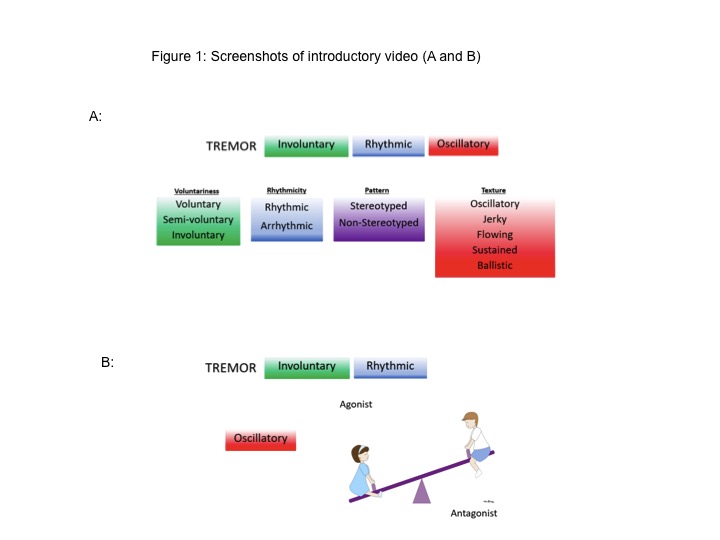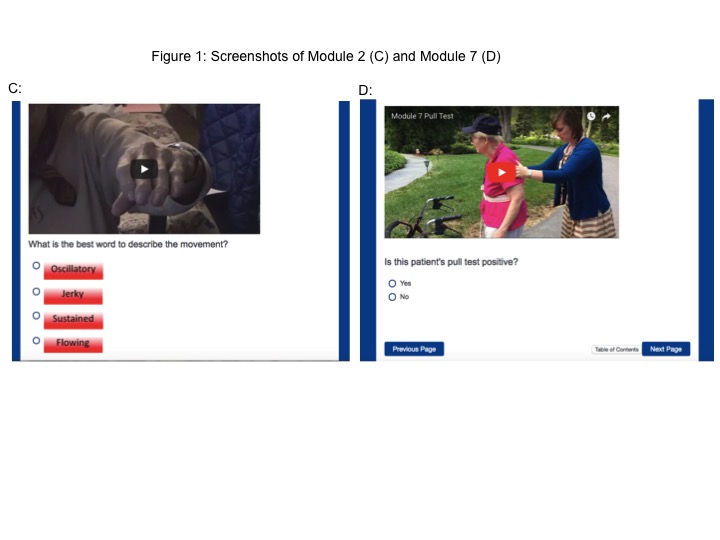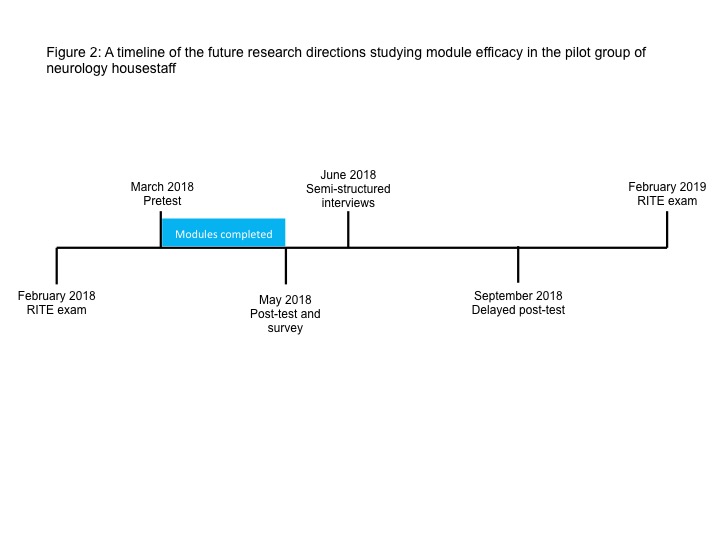Session Information
Date: Saturday, October 6, 2018
Session Title: Education in Movement Disorders
Session Time: 1:45pm-3:15pm
Location: Hall 3FG
Objective: To design and implement an online, video-based, interactive curriculum in movement disorders for neurology residents.
Background: Much of neurology residency is dedicated to inpatient time. Knowledge about outpatient neurology is traditionally supplemented by didactic lectures that may have limited attendance and fail to correlate with outpatient clinical exposure. This may translate to decreased resident interest in outpatient subspecialties: in 2017, 47 applicants applied for 62 fellowship positions in movement disorders. Technology allows us to create unique and interactive learning platforms to enhance resident exposure to movement disorders.
Methods: Original videos were recorded of movement disorder clinic patients, with written informed consent. Patient videos were spliced into short (< 2 minute) clips, with a decision-tree of questions leading the learner through description (e.g. rhythmic), phenomenology (e.g. tremor), diagnosis (e.g. essential tremor), workup, and treatment. Videos were altered with Camtasia with or without graphical enhancement and voiceover. Additional non-patient videos were recorded using Powerpoint and Camtasia, and included graphs, “chalk talks,” original artwork, and other visuals. The modules were inputted into a Qualtrics platform.
Results: An introductory video was developed, introducing residents to the basic language in movement disorders. 10 modules were created, covering the following topics: hemifacial spasm, ET, myoclonus, dystonia, PD, ET-PD, PSP, chorea, tics, and psychogenic. Screenshots of the introductory video and one module are shown in Figure 1 and Figure 2. [Figure 1] [Figure 2] Each module was reviewed by two movement disorders and two non-movement disorders attending physicians, and modifications made based on feedback.
Conclusions: Qualtrics, a survey platform, is a feasible technology to create interactive learning modules. The format of the modules online allows for easy dissemination to learners. The curriculum allows for flexibility without sacrificing interaction. The modules are being piloted with 9 neurology housestaff, with a plan for wider multi-center implementation during the 2018-19 academic year [Figure 3]. We aim to assess feasibility of use, learner satisfaction, and educational efficacy through: pre- and post-tests, RITE exam movement disorders sub-scores, quantitative and qualitative surveys, and semi-structured interviews.
To cite this abstract in AMA style:
S. Schaefer, L. Vadlamani, P. Juthani. The Development of Interactive, Video-Based Modules for Movement Disorders Education [abstract]. Mov Disord. 2018; 33 (suppl 2). https://www.mdsabstracts.org/abstract/the-development-of-interactive-video-based-modules-for-movement-disorders-education/. Accessed April 20, 2025.« Back to 2018 International Congress
MDS Abstracts - https://www.mdsabstracts.org/abstract/the-development-of-interactive-video-based-modules-for-movement-disorders-education/



